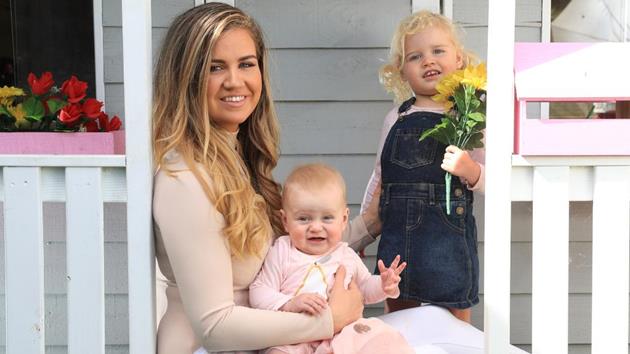A low-income single person can benefit from the following twenty benefits if they live in the right area and follow the right procedures.
Make sure to see if you qualify for any of these benefits, and make sure that your housing situation gives you access to them.
You may be able to save yourself some money, and maybe even get help in other areas of your life, by learning how to claim the benefits for low income single person!
Benefits for Low Income Single Person
1. Save on Rent
Paying rent can be one of the biggest expenses in your monthly budget. If you are a low-income individual living alone, paying rent can be an even bigger expense.
However, there are still many benefits to renting out a space and not owning your own property.
You have more freedom when renting to move when you need to. You also don’t have to worry about upkeep or home repair as much since the landlord will usually take care of these things.
It is easier to save up money by renting rather than putting it all towards mortgage payments.
You’ll likely spend less on food if you buy groceries because the majority of people cook at home and eat at home rather than eating out at restaurants.
2. Own More Time
The money you save can be used to build up your savings or retirement fund and will give you more control over how the money is used. This may be especially important if you’re living off of a fixed income such as Social Security, which may not keep up with the cost of living increases.
3. Own Your Home
One of the most important benefits of living in your own home is that you get to choose the layout and decorate it how you want.
You will feel like a proud homeowner when guests come to visit. In the long run, it might be cheaper than renting.
If you have good credit, you may qualify for a mortgage with a better interest rate and lower monthly payment. Owning your home can boost your self-esteem and give you an emotional anchor in your life.
4. Inflation is Irrelevant
Inflation is irrelevant to the world of single people. There are no children to buy things for, no spouse to take care of, there is just you. You get what you need and want when you need and want it.
Plus, with all that extra time on your hands maybe some free time will open up too.
And let’s not forget about all the money you’re saving by not having a partner or kids!
5. Sleep in Luxury Every Night
Every night, you get to sleep in a clean and comfy bed. You don’t have to worry about what you’re going to do when the temperature drops below freezing.
You don’t have to worry about whether or not the water is going to be running. There’s no worrying about what you’re going to put on your plate when you walk into the kitchen.
All of your clothes are clean, ready to wear, and neatly folded in your closet.
You can eat whatever you want whenever you want because the food will never run out. You’ll never have to pay another late fee because you paid your bills right away this morning!
6. Cash Flow Planning is Easy
The first step in cash flow planning is to make a budget. A budget helps you stay on track by telling you where your money is going and making it easy to see when you’re overspending.
That’s the whole point of a budget. It’s not about how much money you make, it’s about spending less than what you bring in. Let’s say that you want to buy groceries every week for $40.
You’ll need to plan out what other expenses will be coming up so that at the end of each week, your bank account balance won’t go below $40.
Remembering this simple rule will allow you to take control of your finances and give you peace of mind knowing that even if something goes wrong, you’ll have enough money until the next payday.
7. Health Care is Free
If you’re low-income and have no other coverage, you can get free health care through Medicaid.
You might also be able to get help with out-of-pocket costs like co-pays and deductibles. Medicare is available to people over 65 or those who are disabled.
Low-income people on disability may be eligible for Medicare benefits as well. Veterans who need nursing home care are eligible for a special program funded by the federal government.
8. It’s Possible to Be Successful
It’s possible to live a fulfilling and happy life as a low-income single person. You just need to take the time to figure out what makes you happy and then find ways to get it.
For example, if you like cooking, look for an affordable cooking class in your area. If you like reading, sign up for your local library’s summer reading program.
Regardless of where you live or how much money you make, there is always something that will make your life better.
9. Supplemental Nutrition Assistance Program (SNAP)
SNAP is a federal program that helps millions of low-income people and families buy food. SNAP can provide healthy food choices like fruit, vegetables, whole grains, dairy products, and lean meats.
You may also be able to use SNAP to buy seeds and plants to grow food in your garden. SNAP benefits are available 24 hours a day, 7 days a week at most grocery stores. SNAP benefits do not expire as long as you qualify each month.
10. Health Insurance Marketplace
You can find out if you qualify for lower costs on health insurance through the Health Insurance Marketplace.
If you make between 100% and 400% of the Federal Poverty Level and don’t have access to affordable coverage from your employer or other programs, you may qualify for financial assistance.
Qualifying individuals with incomes less than $14,856 a year could get help paying premiums and/or cost-sharing (like deductibles). The subsidy amount varies based on household size and income.
11. Medicaid
If you’re a low-income single person, your state may offer Medicaid. Medicaid is a government program that provides free or affordable healthcare coverage to individuals and families with limited resources.
To qualify, you must be a U.S. citizen or a qualified non-citizen who meets specific age limits, has limited income and resources, and live in one of the states that offer this coverage.
You will need to apply through your state’s Medicaid office. When applying, you’ll have to meet certain eligibility requirements such as earning less than 138% of the Federal Poverty Level (FPL) and having little or no assets (like cash savings, stocks, and bonds).
12. Subsidized Housing, Housing Vouchers, and Public Housing Programs
Subsidized housing, also called Low Income Housing, is housing that is provided at a reduced cost to individuals or families with low incomes.
This type of housing comes in many forms such as apartments, townhouses, and houses.
Public Housing Programs are also a form of subsidized housing but they are run by the government. There are several different types of public housing programs including Section 8 and Public Housing.
13. Welfare or TANF
The first requirement is that you are a US citizen or legal permanent resident. You must be a resident of the state in which you apply for benefits. For example, if you live in California, then your application will be processed by the California Department of Social Services.
To qualify as an individual with a very low income, you need to earn less than $2,101 per year (if married) or less than $1,282 (if unmarried).
Once qualified as very low-income and at least 18 years old and unmarried, there are 20 different ways these benefits can help out someone living on a tight budget.
14. No-cost internet through the Affordable Connectivity Program (ACP)
The Affordable Connectivity Program (ACP) provides no-cost internet to those who qualify. The program is available for families with incomes below 150% of the Federal Poverty Level, who are enrolled in a state Medicaid program, or who are homeless.
If you meet these requirements, you may be eligible to receive broadband service at home and on your mobile device through the Lifeline Program or Link Up America program.
15. Earned Income Tax Credit (EITC)
The Earned Income Tax Credit (EITC) is a refundable tax credit that helps low-income working people. The amount of the credit depends on your filing status and your earned income.
Your eligibility can also change as your life changes, like if you have a baby or get married.
For example, in 2018, if you are not married with one qualifying child and earn $2,500 from wages or self-employment 2018, then you will be eligible to receive an EITC payment of up to $624.
If you are married with three qualifying children and earn $3,000 from wages or self-employment in 2018 then you may qualify for an EITC payment of up to $7273. In 2017, 29.1 million taxpayers received nearly $65 billion dollars in EITC payments from the IRS.
16. Federal Pell Grant Program
The Federal Pell Grant program provides assistance to needy students. It is a need-based grant which does not require repayment and is available to undergraduate students who demonstrate financial need and who have not yet earned a bachelor’s degree or its equivalent.
The amount of the Federal Pell Grant award varies depending on the student’s expected family contribution, as determined by their FAFSA form, but cannot exceed $6,095 for the 2018-2019 school year.
17. Child’s Health Insurance Program (CHIP)
CHIP is a free health insurance program that covers children in families who earn too much to be eligible for Medicaid but not enough to afford private coverage.
This means that kids with CHIP have health coverage, even if their parents are working hard and still struggling financially. If you’re pregnant or have an infant, CHIP also offers prenatal care.
18. Dental Care
Dental care can be expensive, which can make it difficult for people without dental insurance to get the treatment they need when they need it.
Fortunately, there are government-funded programs available like the Federal Employees Dental and Vision Insurance Program (FEDVIP) that provide dental coverage at no cost to federal employees.
19. Food and Nutrition Programs
There are multiple programs that provide food to people in need, whether it’s free or at a reduced cost. Some of these programs include The Supplemental Nutrition Assistance Program (SNAP), which provides benefits like food stamps, or WIC (Women, Infants, and Children), which is another government-funded nutrition program for pregnant women and children under 5 years old who may not have access to enough nutritious food.
20. Funds for Energy Assistance
Most utility companies offer financial assistance to households that are struggling with monthly energy bills, but even with these programs, families sometimes still can’t afford to keep their utilities on.
There are numerous energy assistance programs available, such as LIHEAP (Low Income Home Energy Assistance Program), which is a federal program that helps ensure low-income families don’t have to choose between paying bills and putting food on their tables.
Conclusion
In closing, it is important to remember that being in a low-income situation does not mean one has to stop living their life. It does not mean that one can’t have fun and enjoy life. With these 20 benefits for low income single person, you will be able to live a happy and healthy life on a tight budget.


